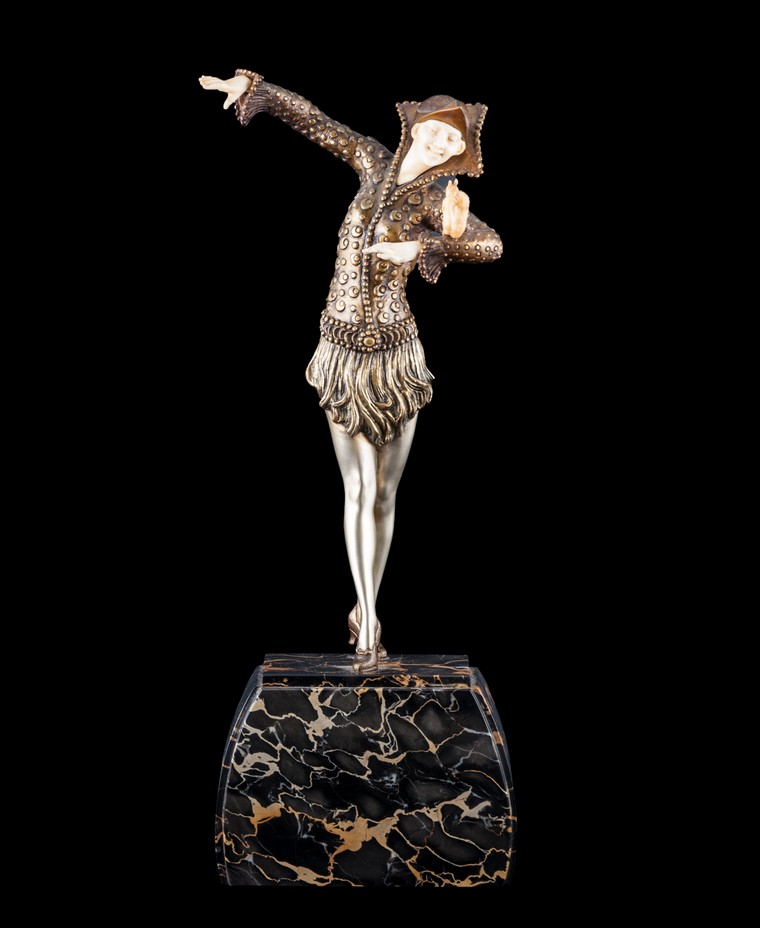Art Deco Sculpture
The medium of sculpture was certainly re-invigorated during the 1920s and 1930s. The metal foundries of Paris and Austria were casting thousands of bronzes and other metal-ware sculptures under the instructions of many sculptors/ artists. The interpretations often depicted the female dancing form, reflecting the frivolous dance shows of the Parisian scene, and the infamous Ballet Russe productions. The figural movement is captured with great skill, whilst displaying exotic and sometimes wild costumes – if they are wearing anything at all! The materials used catered for different markets. At the top end, the sculptures were cast in bronze and often with a patinated and cold-painted finish. For the most expensive, finely carved ivory was incorporated to simulate the exposed bodies of the dancers. For the more modest pieces, composite alloys were used which made them more affordable. You might see these described today as “art metal” or “spelter”. They would then be patinated in a range of finishes, and mounted on often abstract bases of marble or onyx.
For collectors of Art Deco sculpture at auction there are a few names that truly hold international appeal – Demetre Chiparus, Ferdinand Preiss, Marcel Bouraine, and Claire Colinet, are responsible for some of the most striking sculpture of the day. Josef Lorenzl is another highly prized sculptor who produced smaller studies in a full range of materials and can command very strong prices.




